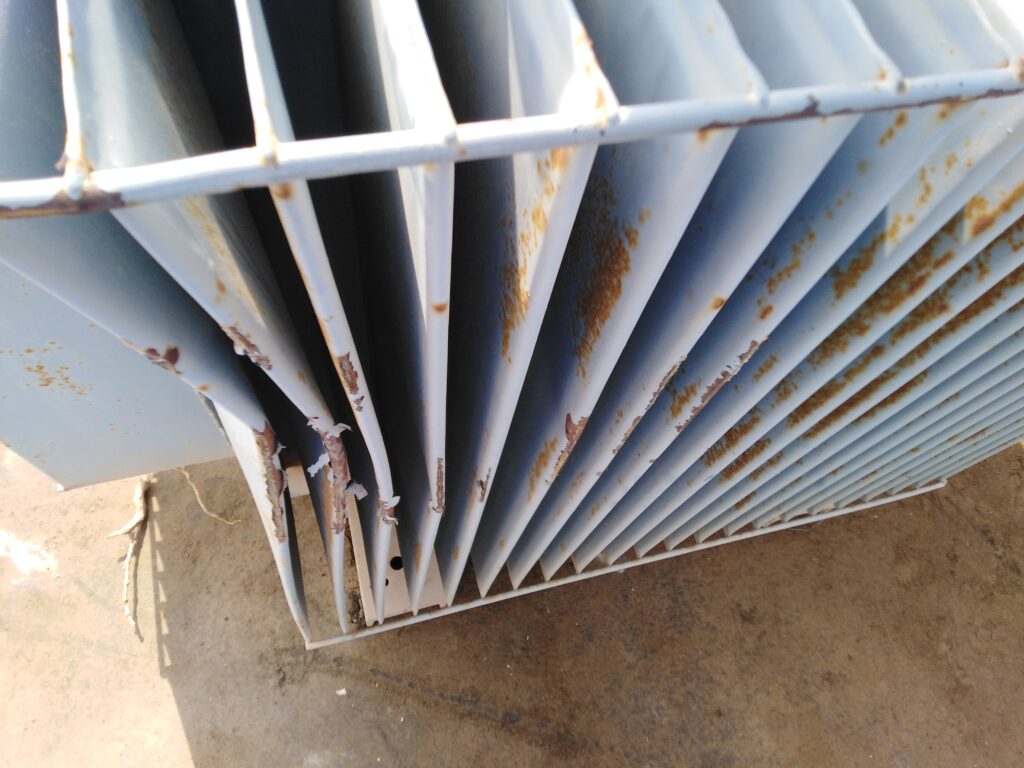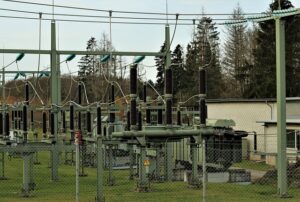Transformers play a crucial role in power distribution, as they step up or step down voltage to ensure that electricity is delivered safely and efficiently.
However, like any equipment, transformers can experience failures due to various reasons such as overload, short circuit, insulation failure, and others.
Transformer mechanical failure can result in power outages, production downtime, and even equipment damage. Therefore, it is essential to understand the causes of transformer mechanical failure and repair techniques.
In this article, we will delve into transformer mechanical failure causes and repair techniques.
Table of Contents
examples of transformer mechanical failure

- Mechanical Damage: Transformers can sustain mechanical damage due to vibrations, aging, and environmental factors such as earthquakes and storms. Mechanical damage can cause the transformer to shift or move, resulting in damaged electrical connections or internal winding damage.
- Thermal Stress: Thermal stress is a common cause of mechanical failure in transformers. It occurs when the transformer is subjected to rapid and extreme temperature changes, causing the materials to expand and contract rapidly. Over time, this can cause cracks to form in the transformer’s insulation or other components, leading to short circuits or insulation failure.
- Corrosion: Corrosion can occur in transformers that are exposed to moisture or other environmental factors. Corrosion can cause the transformer’s metal components to weaken, crack, or break, leading to mechanical failure.
- Aging: Like any mechanical device, transformers can suffer from aging and wear and tear over time. As transformers age, their components can become brittle or weakened, leading to mechanical failure.
- Electromagnetic forces: These forces are generated by magnetic fields in the transformer, which can generate mechanical stress on the windings. This stress can cause mechanical damage to the transformer, such as cracking or deformation of the winding or insulation. Such damage can ultimately lead to a short circuit or failure of the transformer.
- Conductor tipping: Conductor tipping can occur due to the weight of conductors or due to external mechanical forces. If the conductor moves from its intended position, it can cause the winding to short-circuit or generate mechanical stress on the transformer’s insulation, leading to failure.
- Buckling of the conductor in the innermost winding: If the winding buckles, it can cause a short circuit and mechanical stress on the transformer’s insulation, leading to failure.
- Vibration and mechanical movement within the transformer: Mechanical vibration or movement in the transformer can loosen electrical connections, cause damage to the windings, or lead to failure of the transformer. This can occur due to external sources, such as earthquakes, or due to internal sources, such as imbalanced magnetic fields.
- Failure of the coil clamping system: The coil clamping system holds the transformer windings in place, preventing them from moving or shifting. Failure of this system can cause the windings to shift, leading to mechanical stress on the transformer and eventual failure.
- Displacement of the windings: Any movement or displacement of the transformer’s windings can cause damage to the insulation, leading to a short circuit or other electrical faults.
Causes of Transformer Mechanical Failure
Transformer mechanical failure can occur due to various reasons, including:
- Overloading: When transformers are overloaded, they generate excessive heat, which can cause the winding insulation to break down and internal winding damage. Overloading can cause the transformer to fail mechanically due to the resulting high temperatures that can lead to thermal expansion and contraction of the windings, leading to deformation or buckling.
- Short circuits: Short circuits can cause a massive flow of electrical current, leading to transformer overheating and damage. This can cause mechanical failure in the transformer due to the high temperatures generated, which can cause deformation or melting of transformer components.
- Insulation failure: Insulation breakdown can cause a short circuit or overloading, leading to transformer mechanical failure. If the insulation fails, it can result in a short circuit, causing a high current flow and leading to overheating and mechanical stress on the windings, resulting in failure.
- Mechanical damage: Transformers can sustain mechanical damage due to vibrations, aging, and environmental factors such as earthquakes and storms. This can cause distortion, warping, or movement of the windings, leading to mechanical stress and damage to the insulation or other components, resulting in failure.
- Environmental effects such as high humidity or moisture can contribute to transformer mechanical failure by causing corrosion. When moisture or high humidity comes in contact with transformer components, it can lead to rust and corrosion, which can weaken or damage the transformer structure. This can lead to deformation or buckling of the windings, causing mechanical stress and insulation failure. In extreme cases, the corrosion can cause the transformer tank to leak, resulting in the failure of the transformer. Therefore, it’s crucial to protect transformers from moisture and humidity and conduct regular inspections to detect and address corrosion-related issues.
- Installing transformers in special locations, such as chemical industries, can expose them to chemical substances that can cause corrosion. The chemical substances in the environment can react with the transformer components and weaken them, leading to mechanical failure. These substances can also cause insulation breakdown, which can result in short circuits and transformer failure. Therefore, transformers installed in special locations need to be protected from the effects of the environment, such as corrosion and chemical damage. Proper insulation, coatings, and regular maintenance can help prevent mechanical failure caused by environmental factors.
These factors can contribute to transformer mechanical failure, leading to power outages, and even equipment damage. Regular maintenance, inspection, and prompt repairs can help prevent transformer failure and ensure the safe and reliable distribution of electricity.
Signs of Transformer Mechanical Failure
Detecting transformer mechanical failure signs early can help prevent severe equipment damage and power outages. The following are some signs of transformer mechanical failure:
Unusual noises: Grinding, buzzing, and humming noises are signs of mechanical stress, and they indicate the need for inspection and repair.
Overheating: An overheating transformer may emit a burning smell, and its casing may be hot to touch.
Oil leaks: Oil leaks can lead to equipment damage and power outages.
Frequent tripping: Frequent tripping of circuit breakers indicates a problem with the transformer, and it requires immediate inspection and repair.
Transformer Mechanical Failure Repair Techniques
Transformer mechanical failure repair techniques depending on the extent of the damage and the transformer’s location. The following are the three primary repair techniques:
On-site Repairs
On-site repairs involve repairing the transformer at its installation site. This repair technique is suitable for minor damages such as oil leaks, bushing replacements, and gasket replacements.
Workshop Repairs
Workshop repairs involve taking the transformer to a repair workshop for extensive repairs. This technique is ideal for major repairs, such as rewinding, core replacement, and insulation replacement.
Replacement
If the transformer’s mechanical failure is severe and beyond repair, the only option is to replace it entirely.
Preventive Maintenance of Transformers
Preventive maintenance of transformers is crucial in preventing transformer mechanical failure. The following are some preventive maintenance techniques:
Transformer Inspections
Regular transformer inspections can help detect and fix minor problems before they escalate into major mechanical failures.
Oil Testing
Oil testing is a preventive maintenance technique that helps detect transformer insulation and core problems. Insulation problems can cause transformer mechanical failure, while core problems can result in reduced efficiency.
Electrical Testing
Electrical testing is a preventive maintenance technique that helps detect transformer winding and tap changer problems.
Winding and tap changer problems can lead to overheating, which can cause mechanical failure.
Thermal Imaging
Thermal imaging is a preventive maintenance technique that helps detect transformer overheating problems. Overheating can result in mechanical stress and damage.
conclusion
In conclusion, understanding the causes and signs of transformer mechanical failure is essential in preventing power outages and equipment damage.
Early detection of mechanical failure signs and prompt repairs can help extend transformer life and prevent costly downtime. For more information about Transformer mechanical protection, read my article here.
Don’t Leave Empty-Handed!
Install my Free Android App on Google Play:
Electrical Cables Most Common Tables “Cables Tables”
And, my Electrical Calculations App “Fast Electrical Calculator”
Discover more great content by subscribing to My channel
Looking to stay ahead of the game in the world of electrical engineering? Subscribe to my YouTube channel and gain access to exclusive content you won’t find anywhere else!
The staff I recommend
(Amazon Affiliate Links to products I believe are high quality):
- Economy 120 Volt/60Hz AC Power Source – Step-Down Voltage & Frequency Converters 1800W
- UNI-T Digital Multimeter Tester UT139C
- 50-Amp Extension Cord for RV “100ft”
- Voltage Stabilizer 110/220v
- Hair Dryer “best selling“
- TOSHIBA EM131A5C-BS Countertop Microwave Ovens
Disclaimer: This contains affiliate links to Amazon products. I may earn a commission for purchases made through these links.


